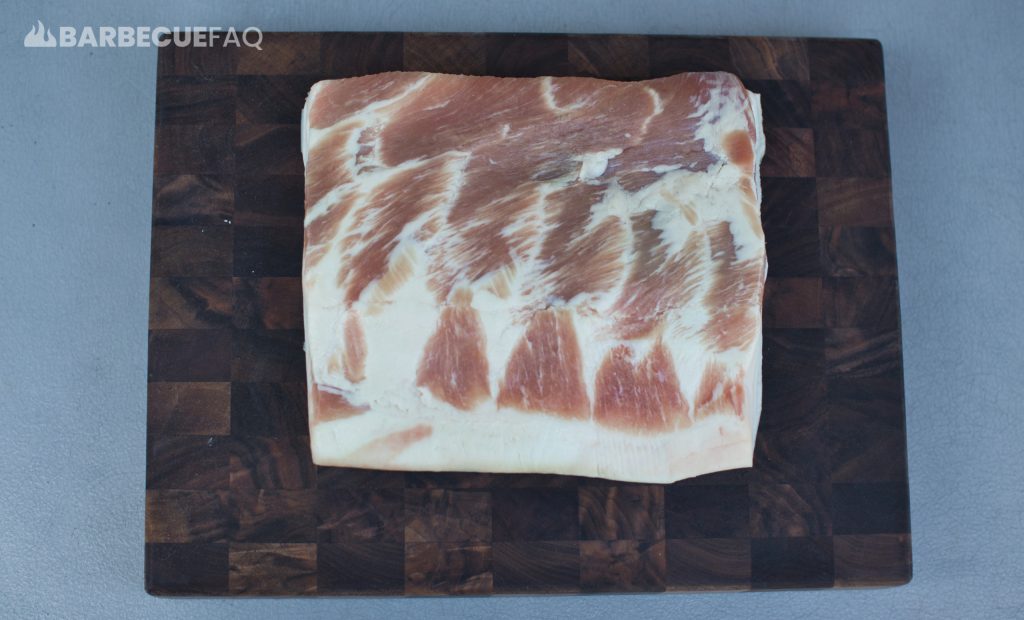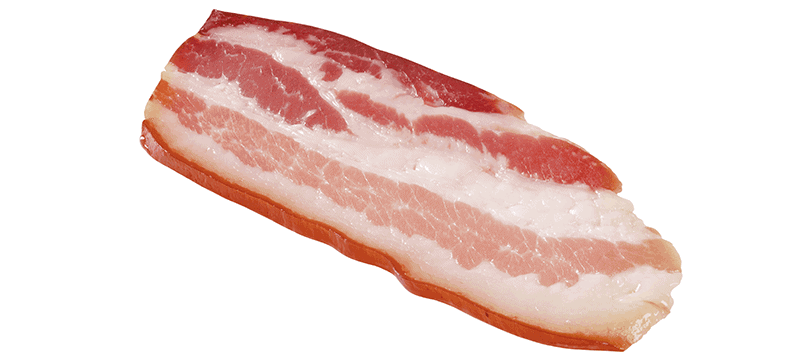By Dylan Clay
One of the most popular foods in the US is bacon. It can be used in a number of ways and is often noted for enhancing any food it’s added to. However, pork belly is a similar cut and is equally versatile.
While technically, bacon is a cut from the pork belly, it can sometimes be difficult to determine exactly where a cut of bacon was derived from on the pig – especially in countries outside the United States.
To preface: It’s important to remember that most bacon is pork belly, but not all pork belly is bacon.
Just as the name suggests, pork belly is sourced from the belly of a pig. This cut is uncured and used for a variety of recipes. It can be purchased in a regular grocery store, or you can purchase a full slab from your local butcher.

It’s typically cooked in a deep fryer, braised, or roasted. It’s tender and has a soft fattiness to it that allows it to melt in your mouth.
Bacon is made primarily from pork belly. In the United States, it’s exclusively from the belly cut. However, bacon has several origins and different variants. It can also be cut from the back, loin, jowls, sides, pork butt and shoulder.

You might see these specific cuts labeled with the following names:
Bacon is made by salting and seasoning these different cuts of pork through a process called “curing.”
Curing anything simply means that you’re using salt to draw moisture out. The curing process typically takes 5-7 days for pork belly. After which the cure mixture is removed from the cut, dried for 6-24 hours, then smoked with a hardwood like apple or cherry (woods commonly used with pork cuts like ribs).
Although bacon is cured or processed, it is still cooked prior to eating to prevent any bacteria from entering your digestive system and causing illness.
You can also find “bacon” sourced from other animals such as chicken, turkey, or lamb.
Bacon is usually eaten like a slice of meat with breakfast or sometimes as a filling in a sandwich. For example, a bacon, tomato, and lettuce (BLT) sandwich.
Unfortunately, thanks to the process of curing bacon, it’s full of nitrites and a lot of salt which can lead to higher blood pressure, heart disease, clogged arteries, and more.
The most basic difference between pork belly and bacon is that the pork belly cut isn’t smoked or cured and it only comes from the belly of the pig. It’s softer meat that is interchangeable with most recipes that call for pork. Where-as bacon can be derived from the belly and is cured and sometimes smoked.
Curing and processing bacon is a large undertaking.
For this reason, bacon is typically higher priced than that of pork belly. The longer process not only takes more time, but it also requires additives such as sodium, nitrites, and whatever type of wood it’s being smoked with.
Keep in mind, the amount of meat that’s on pork spare ribs is entirely dictated by how the butcher trims the meat. Again, most Butchers want to maximize their yield of bacon, simply because they can make more money from it.
Spare ribs aren’t marketed nearly as well as baby back ribs, which are loin meat.
There are no additives in pork belly. It’s not cured so there is no need to over salt it or add in any nitrites. For this reason, many consider pork belly to be healthier in comparison.
Granted, when pork belly is untrimmed and sold as a slab it also tends to feature large amounts of fat.
Bacon can also come from other locations on the pig’s body and is typically cooked until it’s crisp or nearly crisp. While recipes calling for pork can have bacon in them, it’s not the same as using the pork belly which is softer and more tender. Pork belly can be grilled, fried, braised, roasted, and used interchangeably with any recipe that calls for pork.
However if pork belly isn’t properly cooked, the fat and muscles will seize up and will give you more of a rubbery meat than the anticipated soft/tender meat. Pork belly also typically has the skin still on it which can give it a bit of a rind that’s unpleasant to chew.
Bacon is rarely deep-fried however, it’s often fried. It can also be baked or braised and it’s sometimes roasted. With higher nitrites and sodium levels bacon is often considered to be far less healthy than that of pork belly.
